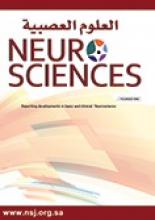12 November 2021 - A new report published by WHO in the lead-up to World Diabetes Day highlights the alarming state of global access to insulin and diabetes care, and finds that high prices, low availability of human insulin, few producers dominating the insulin market and weak health systems are the main barriers to universal access.
“The scientists who discovered insulin 100 years ago refused to profit from their discovery and sold the patent for just one dollar,” said WHO Director-General, Dr Tedros Adhanom Ghebreyesus. “Unfortunately, that gesture of solidarity has been overtaken by a multi-billion-dollar business that has created vast access gaps. WHO is working with countries and manufacturers to close these gaps and expand access to this life-saving medicine for everyone who needs it.”
Insulin is the bedrock of diabetes treatment – it turns a deadly disease into a manageable one for nine million people with type 1[i] diabetes. For more than 60 million people living with type 2 diabetes, insulin is essential in reducing the risk of kidney failure, blindness and limb amputation.
However, one out of every two people needing insulin for type 2 diabetes does not get it. Diabetes is on the rise in low- and middle-income countries, and yet their consumption of insulin has not kept up with the growing disease burden. The report highlights that while three in four people affected by type 2 diabetes live in countries outside of North America and Europe, they account for less than 40% of the revenue from insulin sales.
Keeping the 100-year-old promise – making insulin access universal, published today to commemorate the 100th anniversary of the discovery of insulin, spotlights the main causes for the gaps in global access to insulin as:
The global market shift from human insulin, which can be produced at relatively low cost, to the pricier analogues (synthetic insulins) is imposing an untenable financial burden on lower-income countries. In general, human insulin is as effective as analogues, but analogues are at least 1.5 times more expensive than human insulins, and in some countries three times more expensive;
Three multinational companies control more than 90% of the insulin market, leaving little space for smaller companies to compete for insulin sales;
Suboptimal regulation and policies, including suboptimal pharmaceutical pricing approaches, weak procurement and supply chain management, insufficient financing to cover demand, and overall weak governance are affecting access to insulin and related devices, such as monitoring and delivery devices, in all countries;
Insufficient health system capacity and infrastructure, including a lack of service integration at the primary care level, inadequate capacity for providing diabetes care and ensuring supply continuity and infrastructure for information management, supply management, and local production of insulins are widespread challenges in lower-income countries;
Research is geared towards wealthy markets, neglecting the public health needs of low- and middle-income countries, which account for 80% of the diabetes burden.
The pricing landscape is also uneven and reveals a lack of transparency in the way prices are set, according to the report. For example, biosimilar insulins (essentially generic versions) could be more than 25% cheaper than the originator product, but many countries, including lower-income ones, are not benefitting from this potential saving.
The report suggests several actions to improve access to insulins and related products, including:
Boosting human insulin production and supply and diversifying the manufacturing base for biosimilar analogue insulins to create competition and reduce prices;
Improve affordability by regulating prices and mark-ups, using pooled procurement and improving transparency in the way prices are set;
Promote local manufacturing capacity in under-served regions;
Promote R&D centred on the needs of low- and middle-income countries;
Ensure that increased access to insulin is accompanied by prompt diagnosis, and access to affordable devices for blood sugar monitoring and injecting insulin;
Use health resources wisely by selecting human insulin where possible and allocate adequate funding to provide a full package of care.
WHO has accelerated efforts to address some of the barriers to the availability of insulin and related medicines and health technologies through a series of dialogues with business associations and manufacturers of these products.
Several months after the first dialogue, industry has committed to a number of actions, including:
The development of a policy blueprint for improving access to biosimilars of insulin;
Participation in WHO’s prequalification programme for insulin, glucose meters, test strips and diagnostic tools;
Participation in international/UN pooled procurement or aggregated demand mechanisms, once established;
Submission of data on insulin thermostability to WHO; and
Participation in the reporting mechanism that WHO will use to register and publish contributions from the pharmaceutical and health technology industry.
The expansion of WHO’s prequalification programme to include glucose monitoring devices, test strips and diagnostic tools, and the inclusion of additional forms of insulin and other diabetes medicines in the latest update of the WHO Model Lists of Essential Medicines are expected to lead to improved access in countries where demand is currently unmet.
Efforts to increase access to life-saving diabetes medicines is just one of the workstreams of the Global Diabetes Compact, launched in April 2021. The Compact is bringing together national governments, UN organizations, nongovernmental organizations, private sector entities, academic institutions, philanthropic foundations, people living with diabetes and international donors to work towards a world where all people at risk for diabetes or living with diabetes can access the care they need.
Available from: https://www.who.int/news/item/12-11-2021-new-who-report-maps-barriers-to-insulin-availability-and-suggests-actions-to-promote-universal-access
- Copyright: © Neurosciences
Neurosciences is an Open Access journal and articles published are distributed under the terms of the Creative Commons Attribution-NonCommercial License (CC BY-NC). Readers may copy, distribute, and display the work for non-commercial purposes with the proper citation of the original work.






